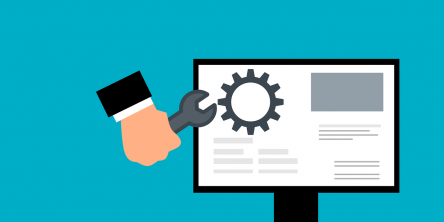IoT and the Role it Plays in Workforce Management

We do not have to tell you just how vital any company’s workforce is — after all, it is the workforce that gets everything done. Think of it as the organization’s spine, i.e., without it, one can not operate. Now that we agree about the role of the workforce let’s move on to its management. Workforce management is an absolute must for any company that wishes to grow its business and, along with it, the profits. And exactly how does workforce management help with that? But if one had to surmise, they would say workforce management enables all that by streamlining run-of-the-mill processes. It is by leveraging modern tools in service of the goals mentioned above. And among the many other novel technologies available in the market, it is the Internet of Things that have demonstrated high levels of potential in this regard.
But before we discuss workforce management and IoT any further, let’s take a moment to understand what the latter really is quick. The Internet of Things is best described as a network of interconnected devices that enables data collection, transfer, analysis, and more. It makes use of a vast number of connected sensors, wireless networks, devices, real-time analytics, and more to execute various tasks and achieve a variety of goals. Even this most basic definition offers plenty of insights about the many, many different ways in which IoT can be leveraged. It is about streamlining workforce management and achieve substantially better results. But to help you understand this duo and its potential better, I am sharing some of their benefits in detail below:
1. Access to data via a central platform: IoT can be leveraged to gather data about not only employees but other tangential aspects, including clients, offerings, and more. It is because they are all consequential to the company’s performance and hence, inter-linked. So, IoT not only enables companies to gather it but also collates and channels it into a unified platform from where it can be utilized in an appropriate manner to assist the endeavors to achieve the business’ goals.
2. Mobile workforce management: This refers to the tools one uses for the management of employees who do not operate from the premises. With IoT in the mix, mobile workforce management can leverage cloud computing, cloud-based communication tools to enable efficient operations even with a remote workforce. So, it can be used to monitor employee performance, check the progress of projects, schedule tasks, send alerts for pending tasks, and so much more. And this is as effective across the entire spectrum of industries, i.e., be it utility workforce management or any other type — the results of this integration are evident and quickly at that.
3. Better visibility: The union of workforce management with IoT also empowers the company with substantially improved levels of visibility since the data isn’t merely collected and dumped into a database. It is also processed to glean insights that help achieve better visibility into the company’s operations. Such levels of visibility can then be leveraged to drive informed decisions aimed at fostering a better rate of growth for the business.
4. Track internal processes: The ability to seamlessly monitor the company’s internal processes is also invaluable and lends many contexts to workforce management and its ability to be efficient. So, say, you can track a given piece of equipment’s performance and start to notice some lags or stats that shouldn’t ideally be there. These insights can then be used to ensure that a relevant technician is assigned. So, that they can take up the task of checking out the equipment and carry out any preventive and corrective measures to ensure it keeps running as intended. It helps companies save much precious time.
Similar Articles
Industries that deal with nuclear energy must be cautious. They need to inspect their equipment often to prevent accidents. Traditional inspection methods can be slow and risky for workers
Startup success depends on fast product development of innovative concepts to create tangible products that help establish competitive advantages
The broad spectrum of industries across the globe is under unprecedented pressure to optimize their operations. And maximize profits, of course. The rise of cloud computing, particularly platforms such as Microsoft Azure, has created incredible opportunities. Unfortunately, it has also made managing IT spending a tad complex
Global markets are becoming more interconnected and quite evidently at that. The result? Shorter product lifecycles have led to unprecedented pressure for businesses to optimize operations. And maintain a competitive advantage, of course.
Using the power of big data analytics can change the way businesses operate. Analysis of large datasets lets companies gain detailed information about their customers and markets, allowing them to remain competitive.
The market is brimming with all sorts of software solutions and whatnot. Yet, software as a service has managed to establish itself as the dominant software delivery model. Businesses are now increasingly switching to cloud apps to improve efficiency and drive innovation. And embracing SaaS is driving an increase in demand for adaptable and scalable software solutions
The global conveyor system market, valued at $6.4 million in 2024, is likely to reach $11 million by 2034.
Content has permanently changed. We essentially have the digital revolution to thank for it. You see, how content is created and consumed has been fundamentally transformed.
Explore how enterprise software simplifies complex testing with secure, scalable solutions, streamlining exam creation, administration, and data management for institutions.









